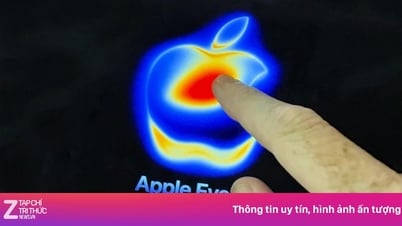
Each OTP code is unique at a time and cannot be duplicated.
OTP is a familiar element in today's digital life, from banking transactions to protecting social network accounts. Few people know that this fleeting series of numbers is created using a complex encryption mechanism, combining real-time, secret keys and standard algorithms.
Understanding how OTP works gives users more peace of mind and a clear understanding of one of the most popular security methods today.
OTP 'Wall'
OTP stands for One Time Password, which means a password that can only be used once. This code is usually 6 digits, randomly generated and appears in operations such as bank transfers, social network logins or account authentication.
What makes OTP special is its extremely short validity period, only 30 to 60 seconds. After that time, the code will expire and must be re-created if not used. This helps to minimize the risk of bad guys taking advantage of or reusing old codes.
Many banks in Vietnam now use OTP to confirm online transactions. Users will receive a code sent to their phone and must enter it correctly within the allowed time. Similarly, platforms such as Google and Facebook also use OTP in two-factor authentication to protect accounts.
Despite its simple and fleeting appearance, OTP is one of the most effective protections available today. The brevity of this code is not random, but is controlled by a strict code generation system, based on time and unique encryption principles.
One code, one use: Where does it come from?
Most OTP codes today are generated using the TOTP mechanism, which stands for Time based One Time Password. This is a real-time code that usually only lasts for about 30 seconds and then is replaced by a new code.
In addition to TOTP, there is another mechanism called HOTP, which uses a counter instead of a timer. However, HOTP is less popular because the code does not automatically expire after a fixed amount of time.
To generate each OTP, the system needs two elements: a unique, permanent secret key assigned to each account and the current time according to the system clock. Every 30 seconds, the time is divided into equal segments and combined with the secret key to generate a new code. This way, no matter where you are using the authentication app, as long as the time on your device matches the server, the OTP will be correct.
Each 30-second segment is considered a "time window". When the time moves to the next window, a new code will be generated. The old code, although not deleted, will automatically become invalid because it no longer matches the current time. This mechanism makes each OTP code only usable at the right time and cannot be reused after a few dozen seconds.
The code generation process follows the international standard RFC 6238, using the HMAC SHA1 algorithm for encryption. Although it only generates 6 digits, the system is complex enough to make guessing almost impossible. Each user has a unique key, and the code generation time is also different, so the probability of duplicate codes is almost zero.
An interesting point is that applications like Google Authenticator or Microsoft Authenticator can generate OTP codes without the need for Internet or phone signal. After being granted the initial secret key, the application only needs to synchronize the exact time to be able to operate independently. This helps increase flexibility while still ensuring security during the authentication process.
Risks from OTP codes and how to protect yourself
OTP is an effective layer of protection but not absolutely safe. In many recent scams, the bad guys did not need to attack with high technology, but only needed to get the victim to provide the OTP code themselves.
Fake calls from bank employees, fake messages with login links or winning notifications are all aimed at obtaining OTP codes within the validity period.
Some malware can also silently read messages containing OTPs if the user has granted permission to an unknown application. This is why more and more services are switching to using apps that generate their own codes, instead of sending them via text messages. This way, the codes are not dependent on the mobile network and are harder to intercept.
To protect your account, you should never share your OTP with anyone. If you receive an unusual call, text message, or link asking for a code, stop and check it carefully. Using two-factor authentication with an app like Google Authenticator or Microsoft Authenticator is also a significant way to increase security.
Source: https://tuoitre.vn/he-lo-bi-mat-ma-otp-20250704115450312.htm



![[Photo] Many people eagerly await the preliminary review despite heavy rain](https://vphoto.vietnam.vn/thumb/1200x675/vietnam/resource/IMAGE/2025/8/27/4dc782c65c1244b196890448bafa9b69)
![[Photo] Prime Minister Pham Minh Chinh chairs meeting of National Steering Committee on International Integration](https://vphoto.vietnam.vn/thumb/1200x675/vietnam/resource/IMAGE/2025/8/26/9d34a506f9fb42ac90a48179fc89abb3)
![[Photo] Brilliant red of the exhibition 95 years of the Party Flag lighting the way before the opening](https://vphoto.vietnam.vn/thumb/1200x675/vietnam/resource/IMAGE/2025/8/27/e19d957d17f649648ca14ce6cc4d8dd4)


































































































Comment (0)